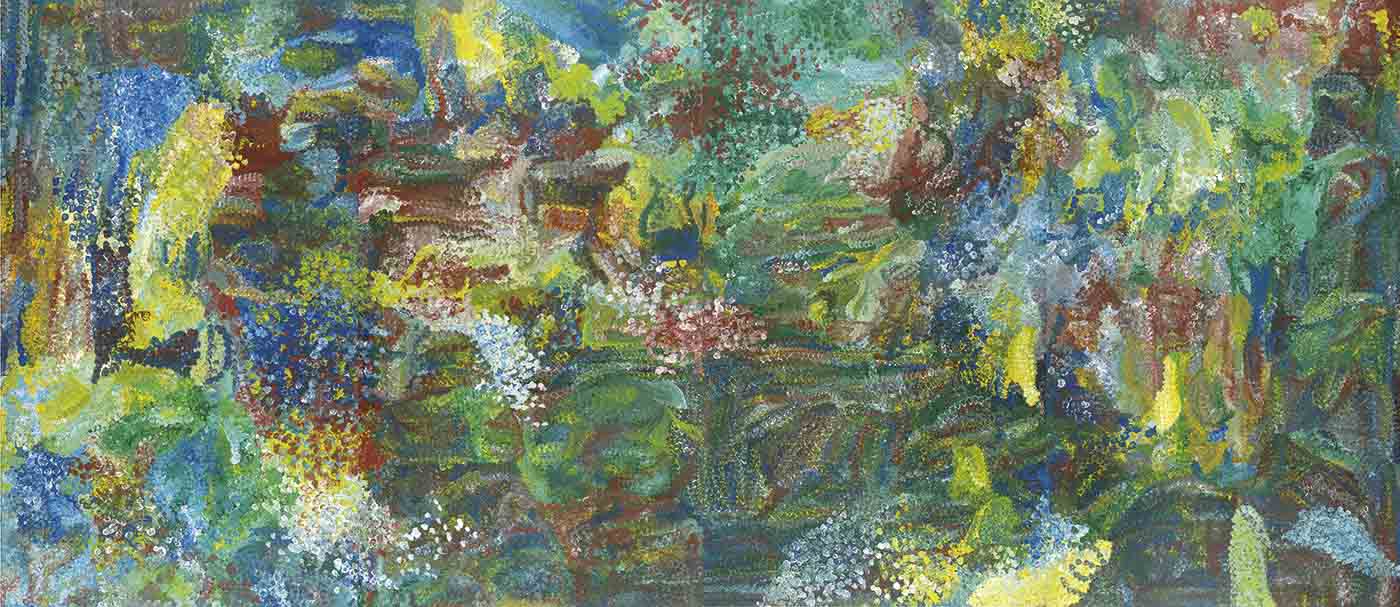Christopher Hodges, artist:
She was profoundly influenced by the colours in the landscape and worked the lushness of the land into many of her paintings.
Works in this section, completed during 1992 and 1993, have been described as belonging to Emily's 'high-colourist' phase, characterised by a rapid succession of intensely high-keyed works in hot pinks, oranges and electric blues.
Her use of dots reaches its crescendo in this phase, with dots merging, separating and dominating in various configurations. They fuse together to create planes of colour structured into mobile shapes, or are choreographed to form lines that suggest dance movements. In earlier works they are used to form fine veils that shield secret markings or create shimmering effects reminiscent of the cosmos.
Emily's palette was largely determined by the changing seasons. Dusty browns appear in her canvases during the dry season, and greens appear after the rains, which Emily referred to as 'green time'. When wildflowers carpeted the desert, she used a spectrum of yellows.
The visual intensity of these paintings recalls the work of French colourists Sonia and Robert Delaunay, or even Claude Monet. Yet Emily knew nothing of their work and, while these French modernists explored pure colour as form and subject, Emily's only subject throughout her life was her ancestral home of Alhalkere.
Earth's Creation, 1994
This masterpiece of grand proportions is imbued with Emily's exuberant celebration of her Country, Alhalkere. It embraces the full width of Emily's Country, her life, her Dreaming and her art, giving expression to her statement that she always paints 'whole lot, whole lot everything'. The dots, structured as swirling formations, create a dynamic sense of movement across the entire canvas.
This lush work was created in what Emily called the 'green time', which occurs after the rains: the verdant green of fresh, thick vegetation, making the earth seem to surge with life. Japanese and Western audiences alike comment on its resonance with Monet. It is a revisionist work executed on commission, a year after completion of the 22-panelled Alhalkere Suite 1993, which stimulated its production.
In 2007 Earth's Creation became the first work by a female Australian artist and the first Aboriginal artwork to break the million-dollar mark at auction.
